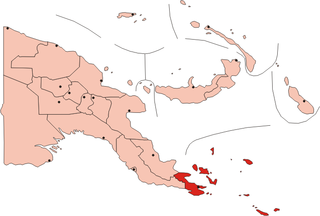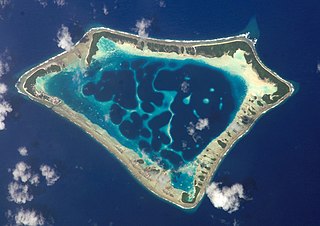
The Battle of the Coral Sea, fought from 4–8 May 1942, was a major naval battle between the Imperial Japanese Navy (IJN) and naval and air forces from the United States and Australia, taking place in the Pacific Theatre of World War II. The battle is historically significant as the first action in which aircraft carriers engaged each other, as well as the first in which the opposing ships neither sighted nor fired directly upon one another.

USS Lexington (CV-2), nicknamed "Lady Lex", was an early aircraft carrier built for the United States Navy. She was the lead ship of the Lexington class; her only sister ship, Saratoga, was commissioned a month earlier. Originally designed as a battlecruiser, she was converted into one of the Navy's first aircraft carriers during construction to comply with the terms of the Washington Naval Treaty of 1922, which essentially terminated all new battleship and battlecruiser construction. The ship entered service in 1928 and was assigned to the Pacific Fleet for her entire career. Lexington and Saratoga were used to develop and refine carrier tactics in a series of annual exercises before World War II. On more than one occasion these included successfully staged surprise attacks on Pearl Harbor, Hawaii. The ship's turbo-electric propulsion system allowed her to supplement the electrical supply of Tacoma, Washington, during a drought in late 1929 to early 1930. She also delivered medical personnel and relief supplies to Managua, Nicaragua, after an earthquake in 1931.
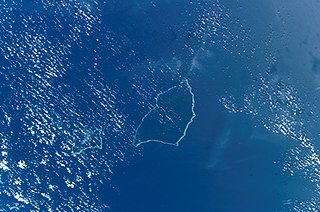
The Maloelap Atoll is a coral atoll of 71 islands in the Pacific Ocean, and forms a legislative district of the Ratak Chain of the Marshall Islands. Its land area is only 9.8 square kilometres (3.8 sq mi), but that encloses a lagoon of 972 square kilometres (375 sq mi). It is located 18 kilometres (11 mi) north of the atoll of Aur. In 2011 the population of the islands of the atoll was 682.
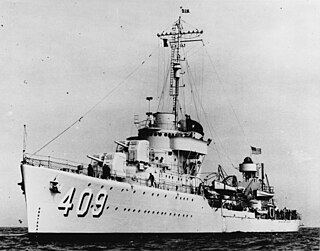
USS Sims (DD-409) was the lead ship of her class of destroyers in the United States Navy during World War II. She was the first ship to be named for William Sims, an Admiral who pushed for the modernization of the Navy.

This is an order of battle for the Battle of the Coral Sea. The battle, fought during 4–8 May 1942, was a major naval battle in the Pacific Theater of World War II between the Imperial Japanese Navy and Allied naval and air forces from the United States (U.S.) and Australia.

Operation Hailstone, lit. "the airstrike on Truk Island"), 17–18 February 1944, was a massive United States Navy air and surface attack on Truk Lagoon conducted as part of the American offensive drive against the Imperial Japanese Navy (IJN) through the Central Pacific Ocean during World War II.

Masafumi Arima was an admiral in the Imperial Japanese Navy in World War II. A pilot, he is sometimes credited with being the first to use the kamikaze attack, although official accounts may have been invented for propaganda purposes.

The New Guinea campaign of the Pacific War lasted from January 1942 until the end of the war in August 1945. During the initial phase in early 1942, the Empire of Japan invaded the Australian-administered territories of the New Guinea Mandate and Papua and overran western New Guinea, which was a part of the Netherlands East Indies. During the second phase, lasting from late 1942 until the Japanese surrender, the Allies—consisting primarily of Australian and US forces—cleared the Japanese first from Papua, then the Mandate and finally from the Dutch colony.
The Bombing of Rabaul in February and March 1942 occurred when Allied forces launched counter-attacks against the Empire of Japan base at Rabaul, Papua New Guinea. Rabaul had been captured by the Japanese during the Battle of Rabaul in late January.
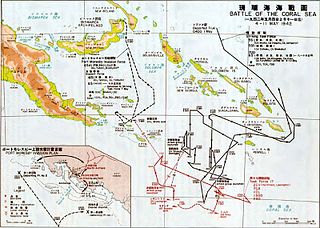
Operation Mo or the Port Moresby Operation was a Japanese plan to take control of the Australian Territory of New Guinea during World War II as well as other locations in the South Pacific with the goal of isolating Australia and New Zealand from their ally the United States. The plan was developed by the Imperial Japanese Navy and supported by Admiral Isoroku Yamamoto, the commander-in-chief of the Combined Fleet. The operation was ultimately abandoned.
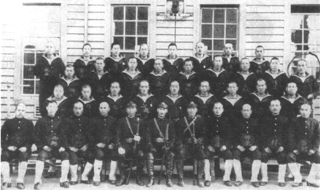
The invasion of Tulagi, on 3–4 May 1942, was part of Operation Mo, the Empire of Japan's strategy in the South Pacific and South West Pacific Area in 1942. The plan called for Imperial Japanese Navy troops to capture Tulagi and nearby islands in the British Solomon Islands Protectorate. The occupation of Tulagi by the Japanese was intended to cover the flank of and provide reconnaissance support for Japanese forces that were advancing on Port Moresby in New Guinea, provide greater defensive depth for the major Japanese base at Rabaul, and serve as a base for Japanese forces to threaten and interdict the supply and communication routes between the United States and Australia and New Zealand.

The 1st Air Fleet also known as the Kidō Butai, was a name used for a combined carrier battle group comprising most of the aircraft carriers and carrier air groups of the Imperial Japanese Navy (IJN), during the first eight months of the Pacific War.
William Bowen Ault was a commander in the United States Navy during World War II and a posthumous recipient of the Navy Cross.

The Invasion of Salamaua–Lae, called Operation SR by the Japanese, was an operation by Imperial Japanese forces to occupy the Salamaua–Lae area in the Territory of New Guinea during the Pacific campaign of World War II. The Japanese invaded and occupied the location in order to construct an airfield and establish a base to cover and support the advance of Japanese forces into the eastern New Guinea and Coral Sea areas. The small Australian garrison in the area withdrew as the Japanese landed and did not contest the invasion.

Akitsushima (秋津洲) was a seaplane tender of the Imperial Japanese Navy (IJN), serving during World War II from 1942 until being sunk in September 1944.
The Zuihō class (瑞鳳型) was a group of two aircraft carriers built for the Imperial Japanese Navy before World War II. Both ships were originally built as submarine tenders, but were subsequently converted into carriers. Completed in early 1942, Shōhō supported the invasion forces in Operation MO, the invasion of Port Moresby, New Guinea, and was sunk by American carrier aircraft on her first combat operation during the Battle of the Coral Sea on 7 May. Shōhō was the first Japanese aircraft carrier to be sunk during World War II. Zuihō played a secondary role in the Battle of Midway in mid-1942 and did not engage any American aircraft or ships during the battle. The ship participated in the Guadalcanal Campaign during the rest of 1942. She was lightly damaged during the Battle of the Santa Cruz Islands during this campaign and covered the evacuation of Japanese forces from the island in early 1943 after repairs.


